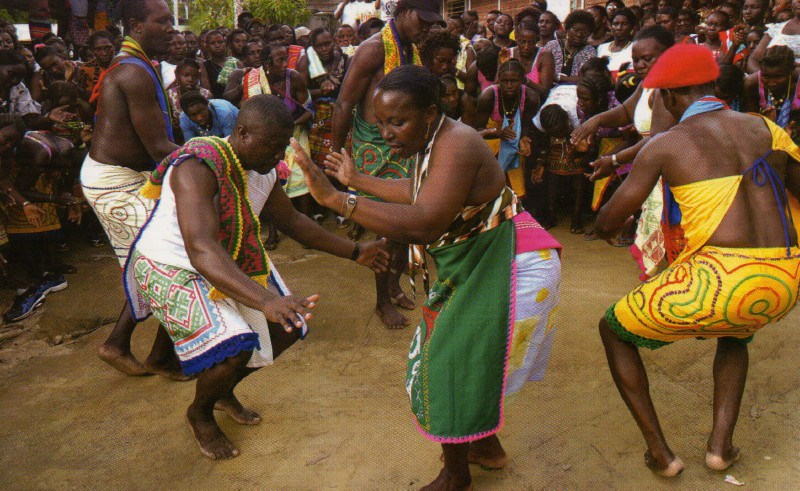By Paul H Williams
The Jamaican Maroons started out as a set of people who defied the plantocracy and resisted enslavement. They rejected the notion of being fettered and controlled, and created their own space in which to live the life they chose, away from the whips and whims of enslavers.
However, the first Maroons in Jamaica were the Tainos who fled to the interior when the Spaniards came, but the term is universally applied to African people who ran away from plantations to serve their own agenda.
Run-away Tainos were joined by the Africans with whom they interbred. So, there are Maroons of different shades of black and brown, who have all been assimilated into the economic, social and politic fabrics of Jamaican life, in one way or the other.
They enjoyed political autonomy in their enclaves, calling themselves a state within a state, and selecting their own leaders. Accompong Town in St Elizabeth even has its own constitution and passport. Yet, Maroons have been participating in general and parochial elections, and some of the communities are known to slant towards a particular political party or the other.
Accompong Town is one of five major Maroon villages in Jamaica, the others being Charles Town and Moore Town in Portland, Scotts Hall in St Mary, and Flagstaff in St James. Also in St James is Maroon Town, in which most of the Maroons who were tricked and exiled to Halifax, Nova Scotia in Canada, lived. Some died in the brutally cold weather, some remained in Canada, while others were repatriated to Sierra Leone in Africa.
Not all the people who live in these communities regard themselves Maroons, and there are many Maroons who do not live in these communities, and have never been to any of them. They know about their Maroon heritage from relatives. Some are curious about it, others are nonchalant.
Each village has annual celebrations: January 6 in Accompong Town, on and around June 23 in Charles Town, Heroes Day/Nanny Day in Moore Town, and Emancipation Day in Scotts Hall. These are occasions when Maroon culture and history are exposed, and are open to the wider society, of which many members misunderstand the Maroon story, which was told in a 2012 documentary, Akwantu: The Journey Continues, by Hollywood stuntman, Roy T. Anderson, himself a descendant of Accompong Town Maroons.
Recently, The Gleaner spoke with some Maroons about what it is like to be a Maroon in Jamaica, and their attitude towards the legacy of freedom and self-determination bequeathed to them by their forebears.
Vivian Crawford, executive director of the Institute of Jamaica, claims his Maroon heritage from Moore Town. “I am proud that my ancestors were able to force the British to sign a peace treaty for our inalienable rights, especially at a time when ‘Brittania ruled the waves’. Brittania could not rule the bushes where, camouflage as a strategy, they did not understand,” he said, among other things.
Gloria ‘Mama G’ Simms, is a descendant of the Trelawny Town Maroons and founder of the Maroon Women Indigenous Circle. In 2014 she was enstoolled in Jamaica by the Okanaisi Maroons of Suriname as Gama’an, chief of chiefs. She resides in Charles Town. In the 2015 Roy T. Anderson film, Queen Nanny: Legendary Maroon Chieftainess, she reprises the role of Nanny.
“Nanny is my deity, my goddess, is my almighty … Is my great mother spirit … I am on a mission. I am a vessel. I am the ancestor’s tongue, mouth, lips … They live through me, make myself available to them to continue the work … Maroon life is the root of black people heritage around here … It is the model of the institution of the African family that was torn apart by slavery,” she said.
Marcia Douglas is at the helm of Charles Town leadership hierarchy since Colonel Frank Lumdsen made the transition to ancestral realms in 2015. She, too, was born in a Maroon family. Her father Kenneth Douglas helped to revive the Maroon culture in Charles Town.
Also inspired by Nanny, Douglas said, “Being a Maroon woman means that you are the backbone of the situation.” Along with Simms, she is focusing on the empowerment of women, in and outside of Maroon circles, and is urging those on the outside looking in to be a part of the movement.
Among the youths who are actively involved in the preservation of Maroon culture is Tajay McLeod, who performs with the Charles Town Drummers and Dancers. He, too, claims his Maroon heritage from Moore Town through his mother, and maternal grandparents. His late grandfather, he said, taught him many things about the Maroons, and he regrets not being able to document the lessons tangibly.
“I love my culture, that says it all, the dance, the drumming, everything. I just enjoy the entire culture of the Maroons,” he said. And to the question of what it means to be a young, Maroon man, the Titchfield High School graduate replied, “I know where we are coming from as a people, and once you are a Maroon you can’t change that, you have to embrace it.”
Ten-year-old Jamokia Rose, daughter of Acting Colonel Douglas, has Maroon heritage from both sides of her family. She is living the life of a maroon child participating in rituals and festivals from she was about two years old. She is very much aware of her maroon heritage, and the power it wields. She believes it is her duty to educate her peers about the Maroons, a people whose spirit she said was not broken. By telling them about it the tradition will continue for years to come, she said.



1 comment
Very informative, this rich history should be taught in the public schools
Comments are closed.